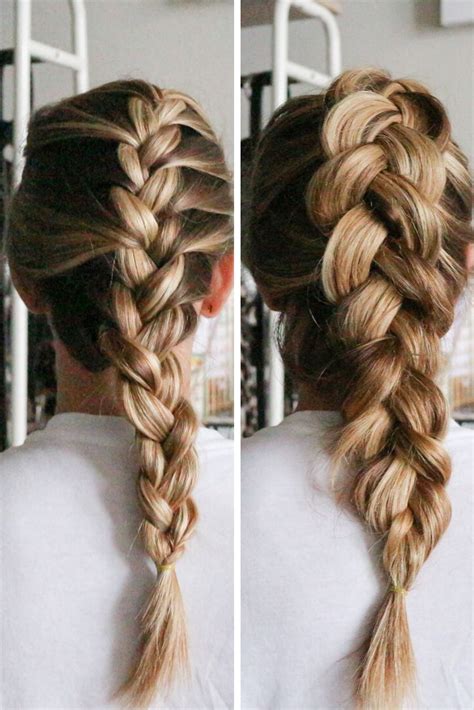Introduction
Braiding is a versatile hair styling technique that can create a variety of looks, from elegant to casual. Two of the most popular braiding techniques are the Dutch braid and the French braid. While both techniques produce beautiful results, they have some key differences that make them suitable for different hairstyles and occasions.

Dutch Braid vs French Braid: Key Differences
1. Technique
- Dutch Braid: The Dutch braid is created by taking sections of hair from underneath the previous sections and crossing them over each other. This creates a raised, textured braid.
- French Braid: The French braid is created by taking sections of hair from the sides and crossing them over the center section. This creates a flatter, more intricate braid.
2. Appearance
- Dutch Braid: The Dutch braid has a wider, more voluminous appearance than the French braid. It is often used to create a more dramatic look.
- French Braid: The French braid has a narrower, more delicate appearance than the Dutch braid. It is often used for more formal or romantic hairstyles.
3. Pain Level
- Dutch Braid: The Dutch braid can be more painful to create than the French braid because it involves crossing sections of hair underneath each other.
- French Braid: The French braid is generally less painful to create than the Dutch braid because it involves crossing sections of hair over each other.
4. Suitability
- Dutch Braid: The Dutch braid is suitable for a variety of hair types, including fine, thick, or curly hair. It is also a good choice for people who want to add volume to their hair.
- French Braid: The French braid is best suited for people with straight or wavy hair. It can be difficult to create a French braid in curly or very thick hair.
Which Braid Is Right for You?
The best way to decide which braid is right for you is to consider your hair type, the occasion, and your personal style. If you want a dramatic, voluminous braid, the Dutch braid is a good choice. If you want a more delicate, intricate braid, the French braid is a better option.
How to Create the Perfect Dutch or French Braid
Step-by-Step Instructions
Dutch Braid
- Brush your hair to remove any tangles or knots.
- Section off a small portion of hair at the top of your head.
- Divide this section into three equal strands.
- Cross the left strand over the center strand.
- Cross the right strand over the new center strand.
- Continue crossing the left and right strands over the center strand, taking small sections of hair from the sides and adding them to the outer strands.
- Braid all the way down to the end of your hair.
- Secure the braid with a hair tie.
French Braid
- Brush your hair to remove any tangles or knots.
- Section off a small portion of hair at the top of your head.
- Divide this section into three equal strands.
- Cross the right strand over the center strand.
- Cross the left strand over the new center strand.
- Take a small section of hair from the right side and add it to the right strand.
- Cross the right strand over the center strand.
- Take a small section of hair from the left side and add it to the left strand.
- Cross the left strand over the new center strand.
- Continue adding sections of hair from the sides and crossing the left and right strands over the center strand.
- Braid all the way down to the end of your hair.
- Secure the braid with a hair tie.
Common Mistakes to Avoid
- Not brushing your hair before braiding: This can lead to tangles and knots in your braid.
- Biding too tightly: This can cause pain and damage to your hair.
- Adding sections of hair that are too large: This can make your braid look bulky and uneven.
- Crossing the wrong strands: This can ruin the braid and make it look messy.
Conclusion
The Dutch braid and the French braid are both beautiful and versatile hairstyles. By understanding the key differences between the two techniques, you can choose the right braid for your hair type and the occasion. With a little practice, you can master both techniques and create stunning braids that will turn heads.
